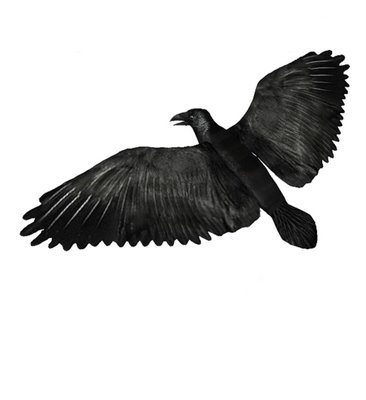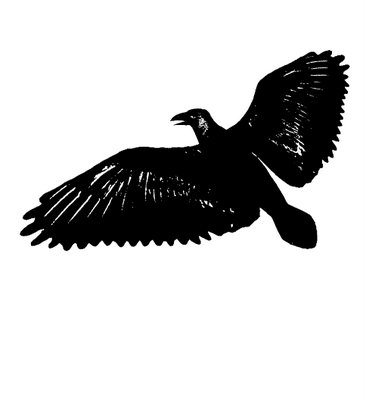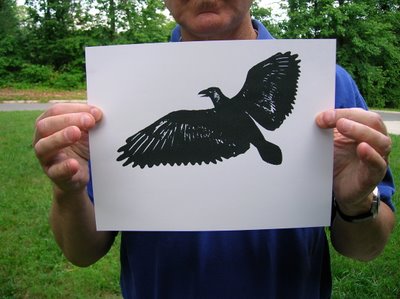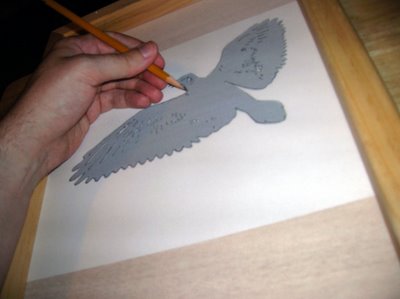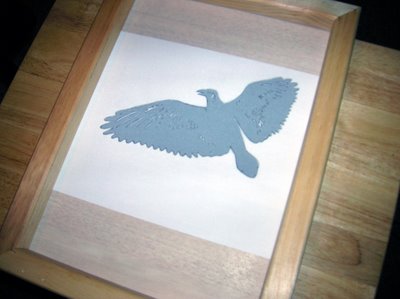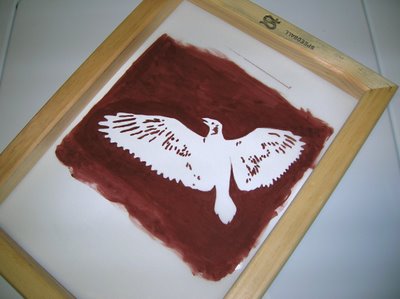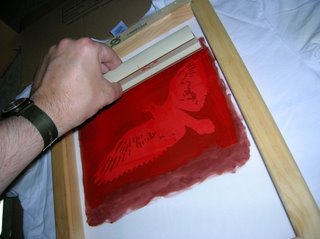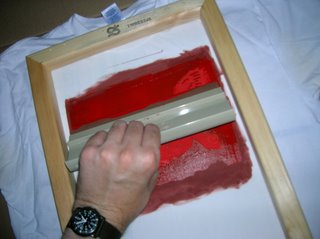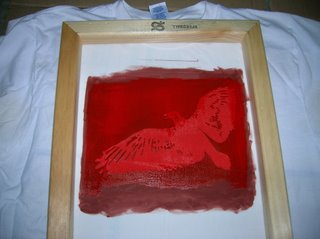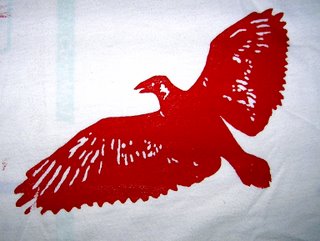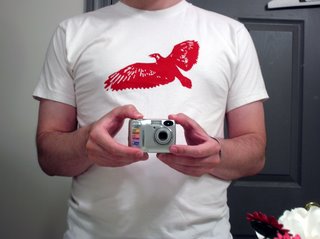The Screen Filler Method
1. Screen Filler Solution (I am using Speedball brand)
2. a cheapo brush and a pencil
3. Screen Frame (Polyester mesh works well)
4. Screen Printing Ink (again, Speedball works well and makes a type specifically for fabrics)
5. A Squeegee or flat piece of plastic for smoothing ink
6. A liberal number of paper towels or rags
7. Greased Lightning (it's a cleaning product not an alcoholic drink) or Comet. You will also need a Scrub brush. It will take a few good minutes of scrubing to clean off the embedded Screen Filler when you are finished.
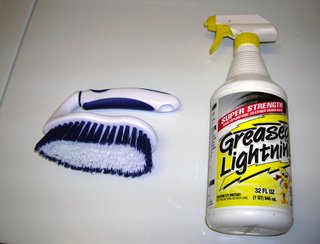
8. Access to a water hose with a forceful spray will also be of help when you decide to clean the ink and Screen Filler. Screen Printing ink drys FAST so it is a good idea to clean up immediately after printing.
